Earth Surge
Laurie Kang

Mother
Stainless steel mixing bowls, pigmented silicone, rubber, polymer clay, power mesh, paint can, cordyceps fungus, steel machinery, peach pit, lotus seed, pewter, cast aluminum ginseng, cast aluminum cabbage, cast aluminum peach pit, cast aluminum lotus root, cast aluminum Asian pears, cast aluminum clay forms, aluminum mesh, sand bag, plastic wrap, copper chainmaille made by Hanna Hur, reflective foil, plastic bags, copper garden mesh, dried fish bladder, dried magnolia flowers, dried hibiscus, ground mung and adzuki beans, cast bronze, hats
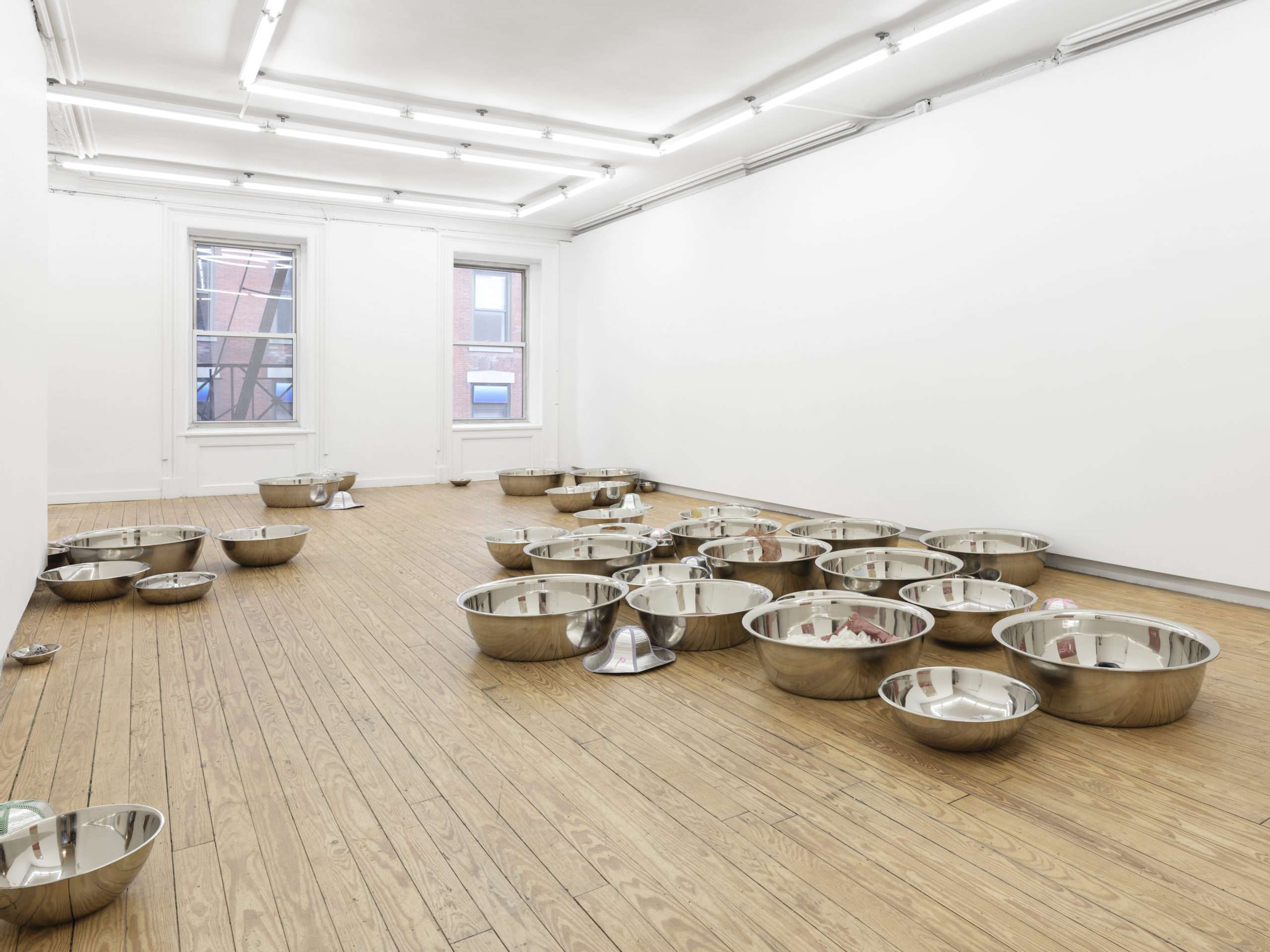
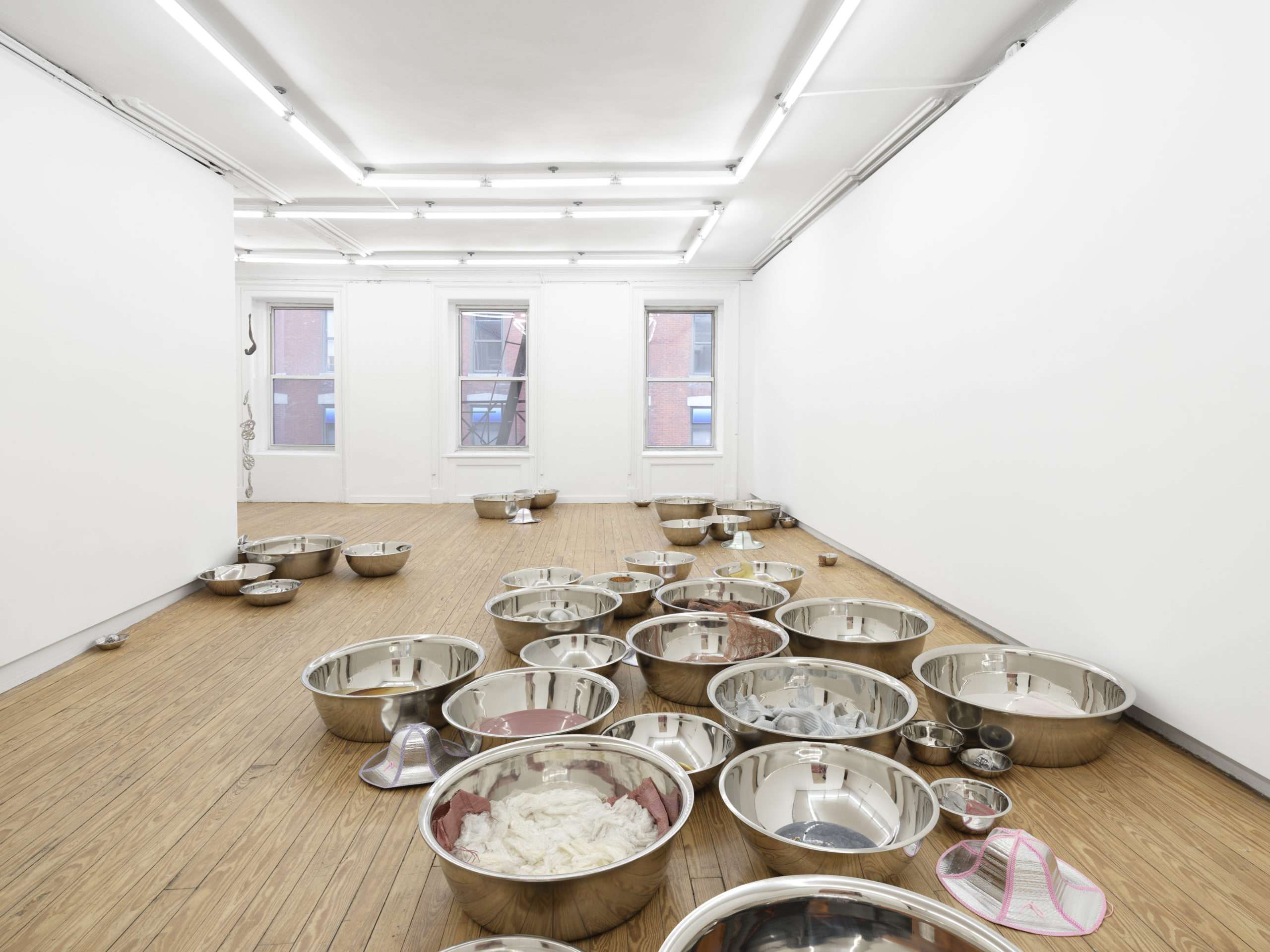
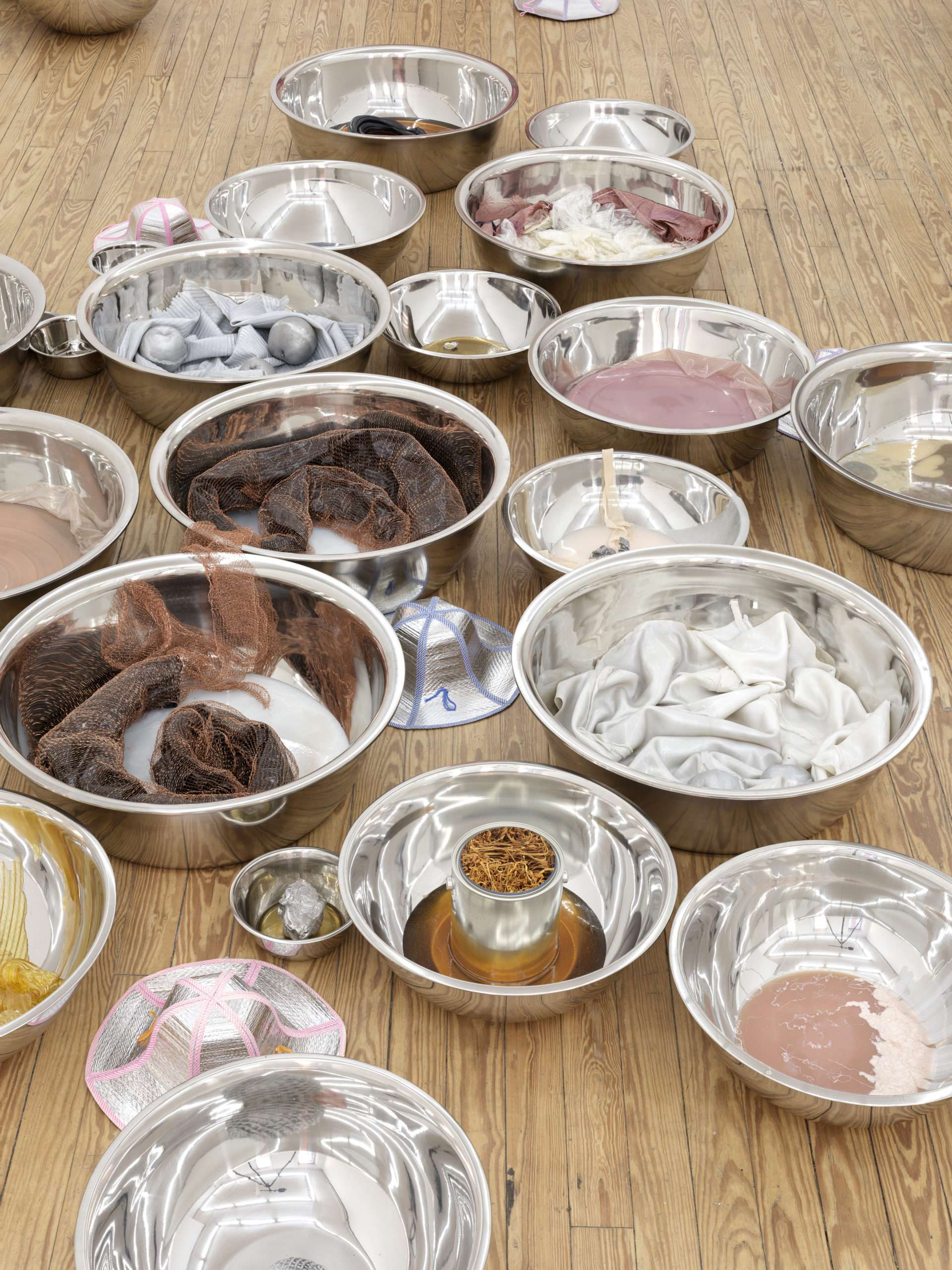
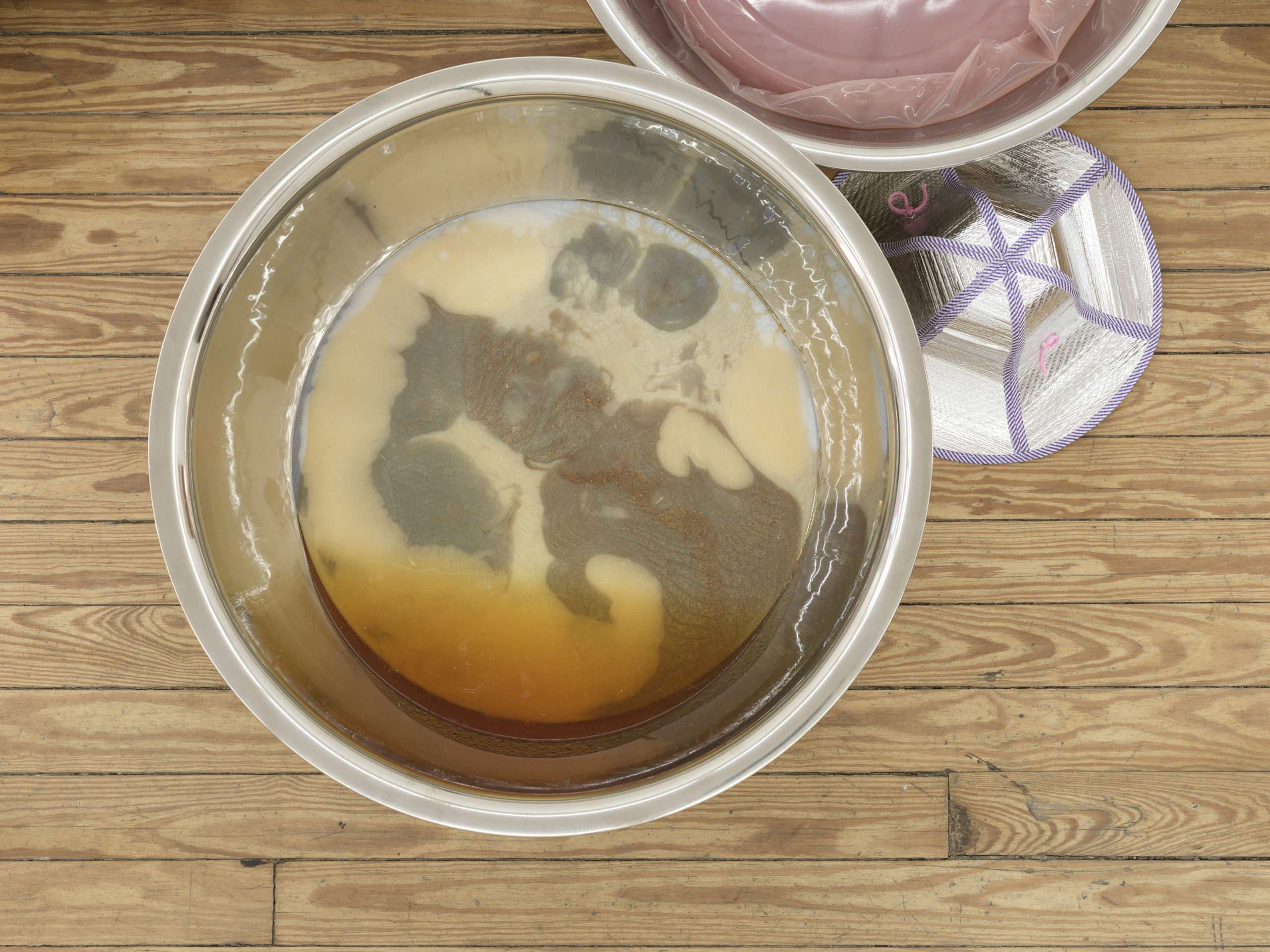
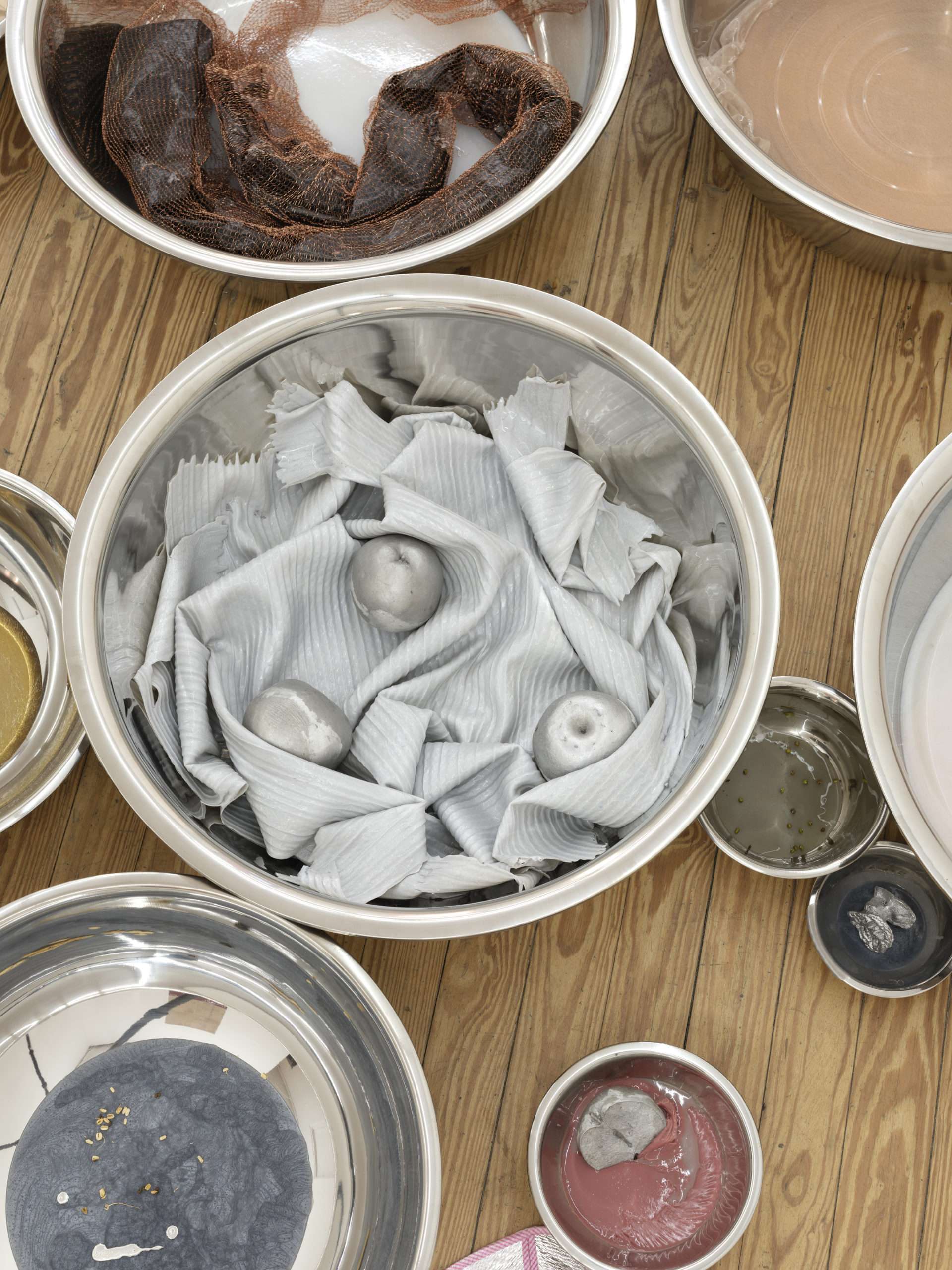
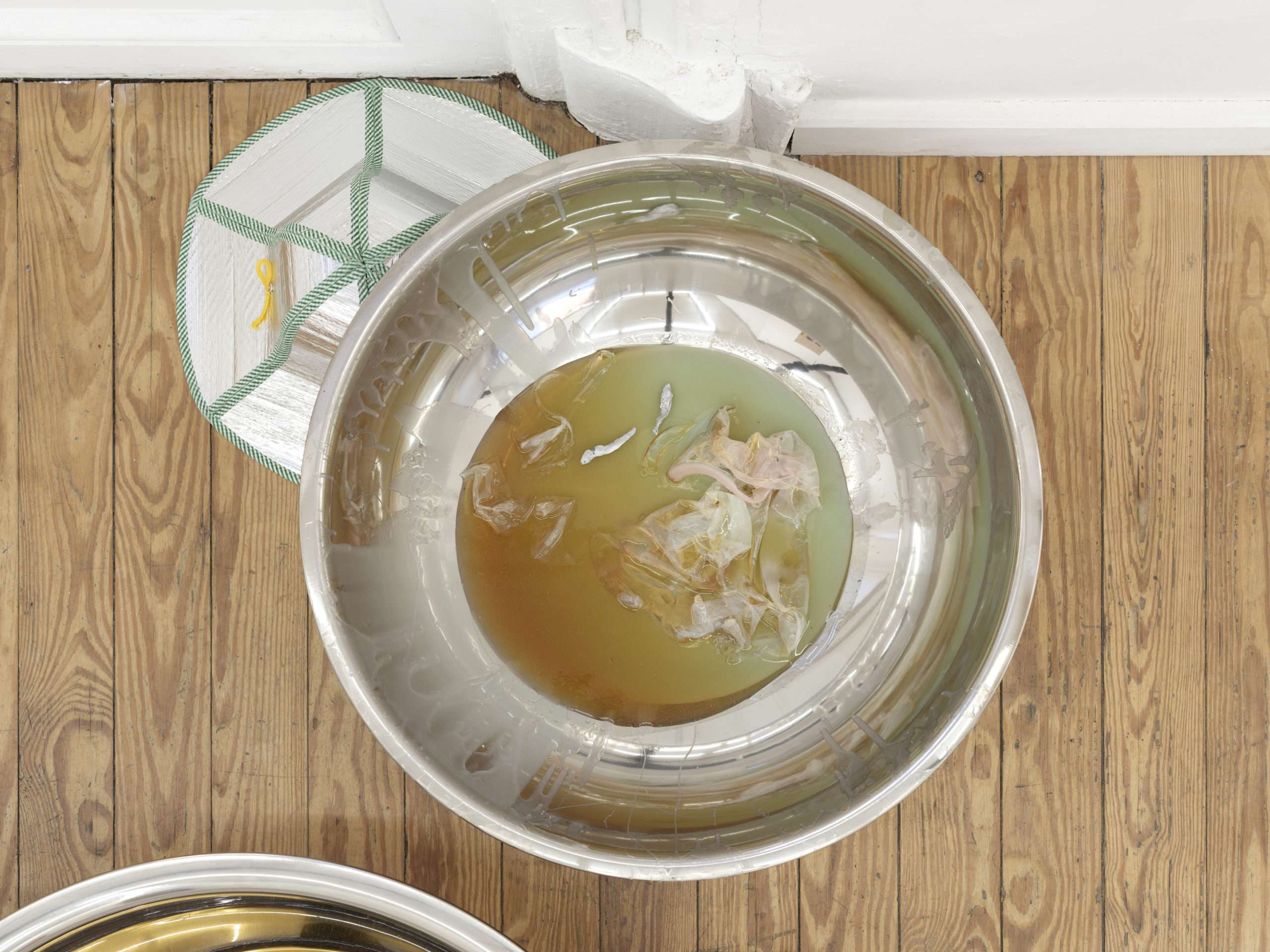
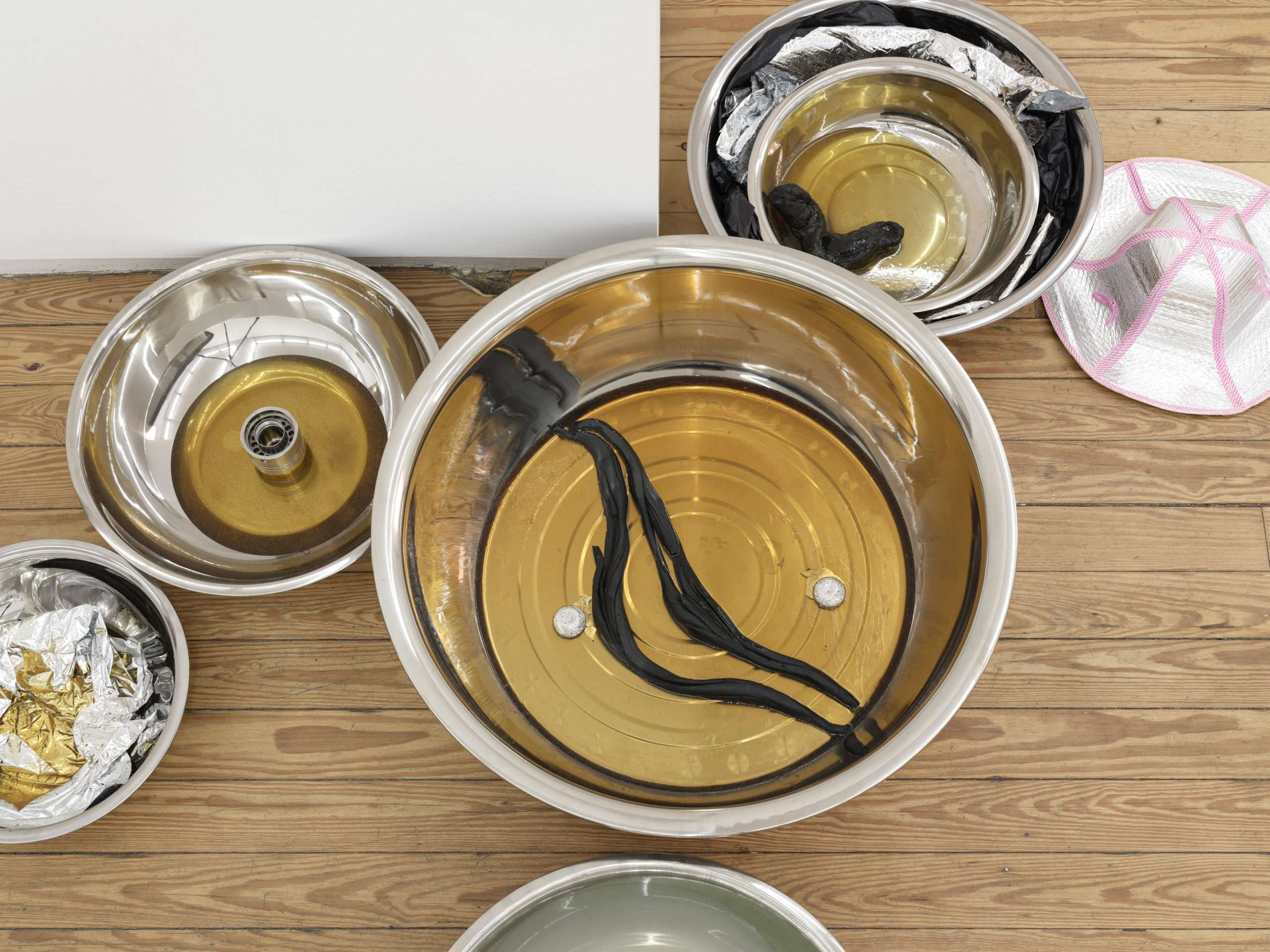
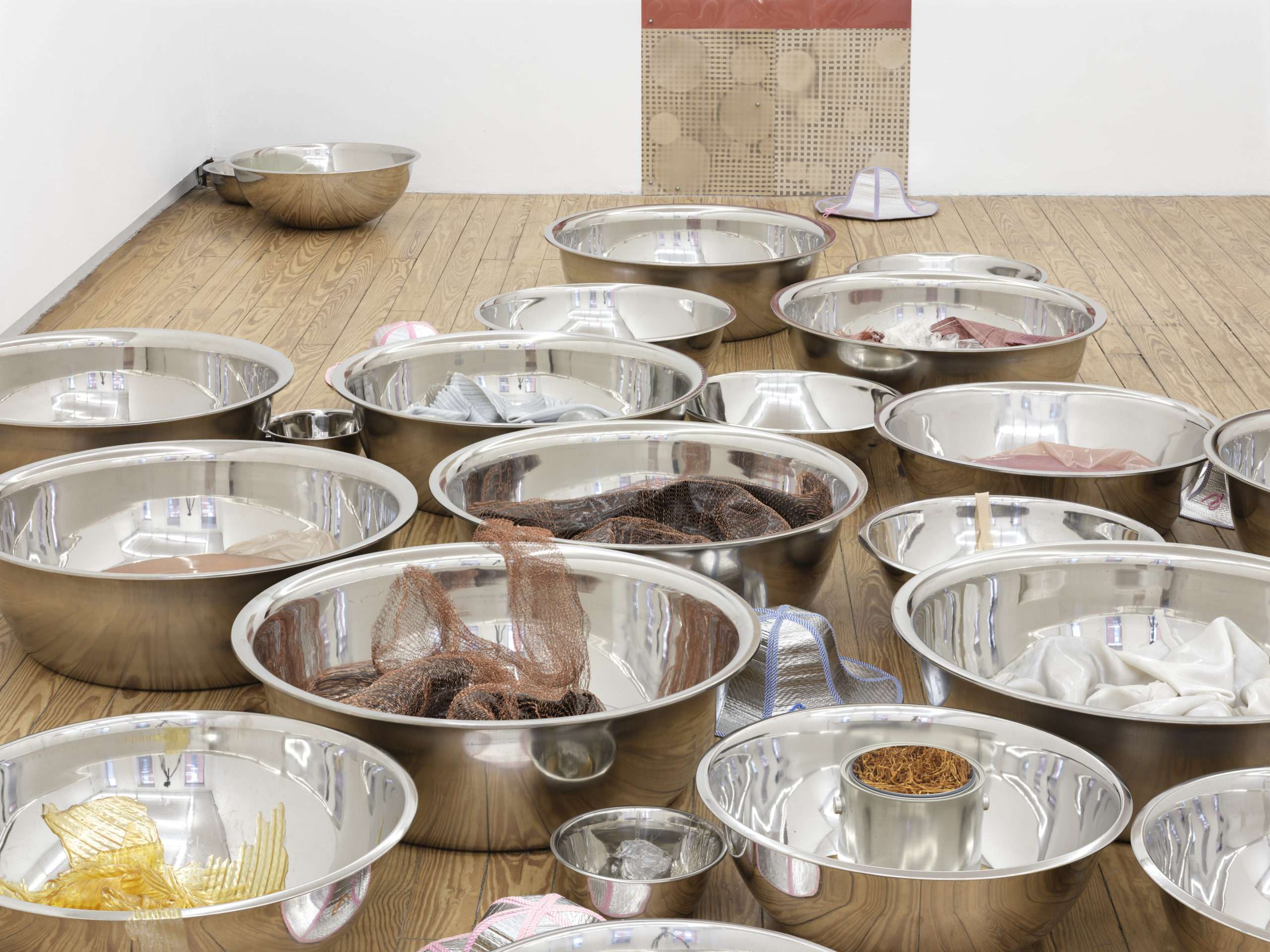
Interstitium (Door) II
Photograms, unfixed film (continually sensitive), spherical magnets, cast aluminum anchovies, thread
32 × 80 inches
2021


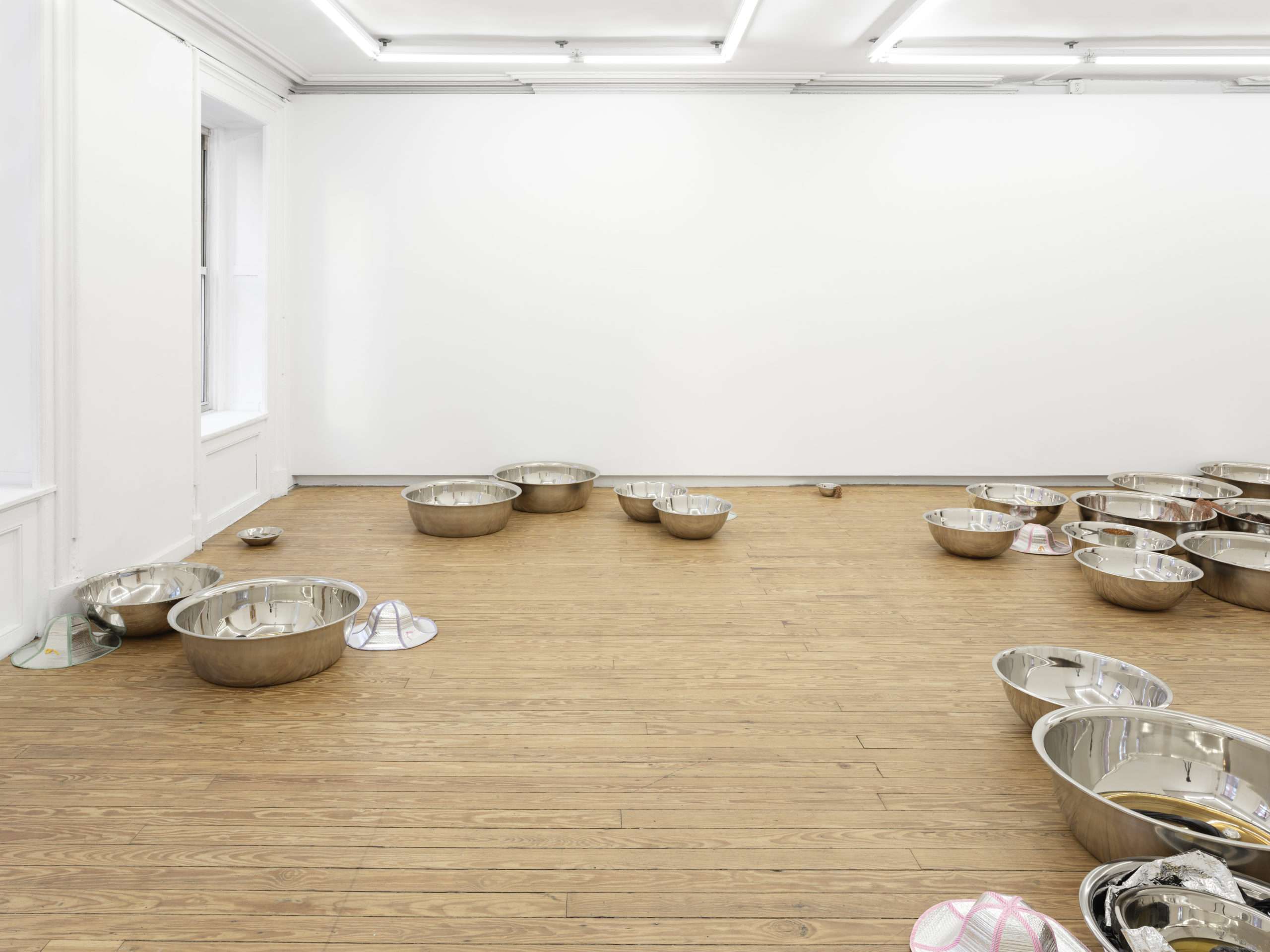
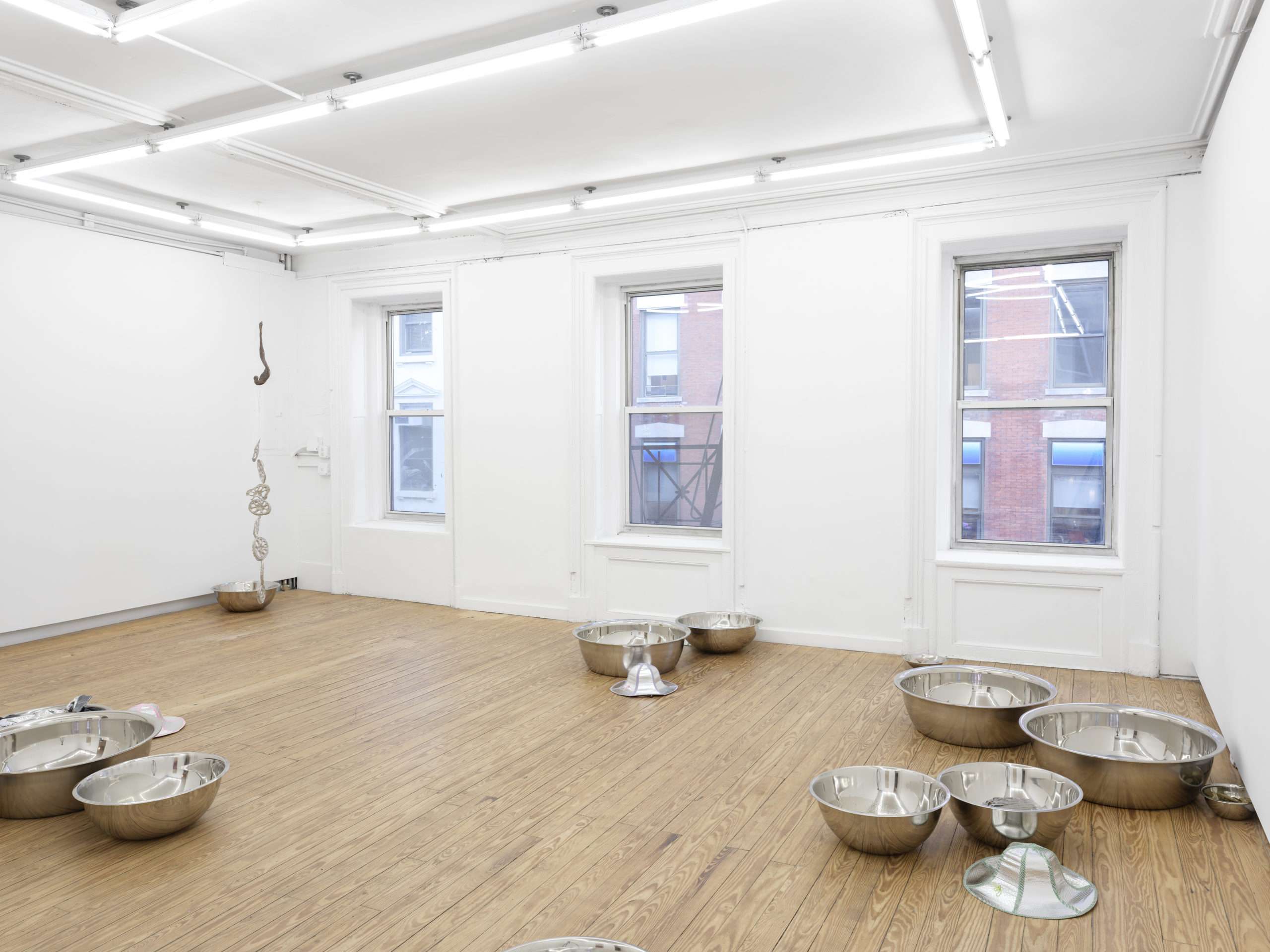
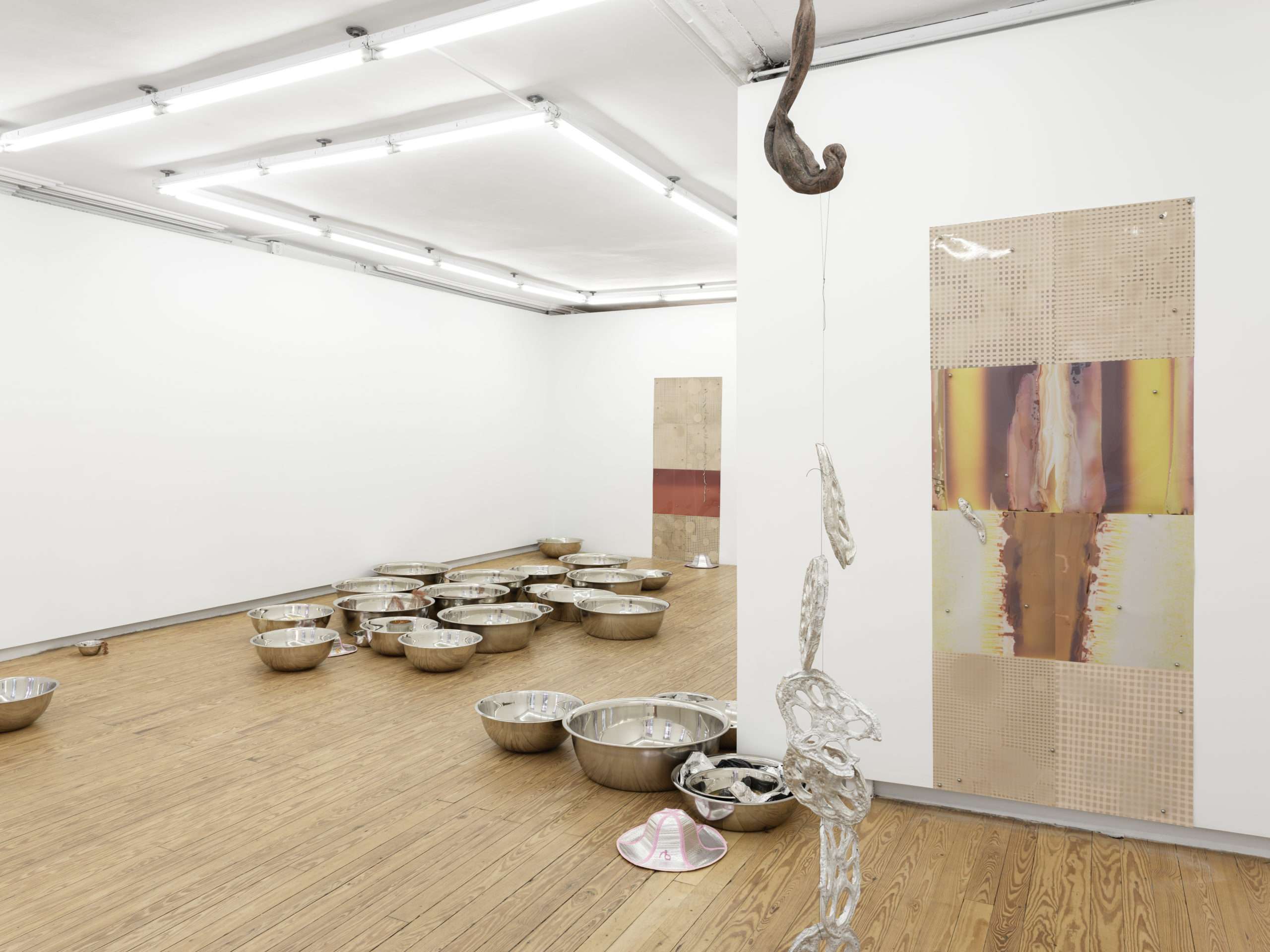
Origin Gate
Bronze, cast aluminum lotus root, thread
2021
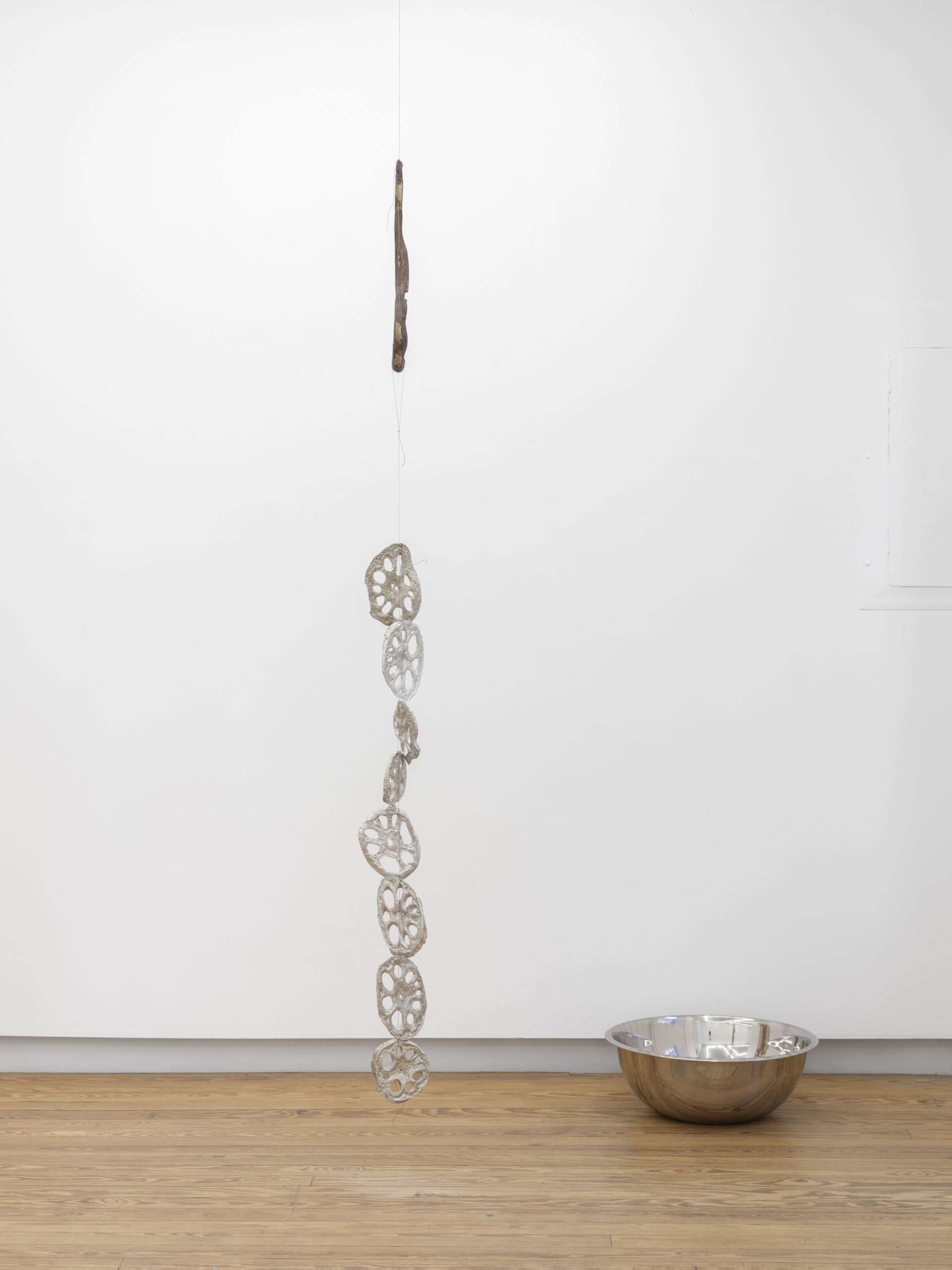
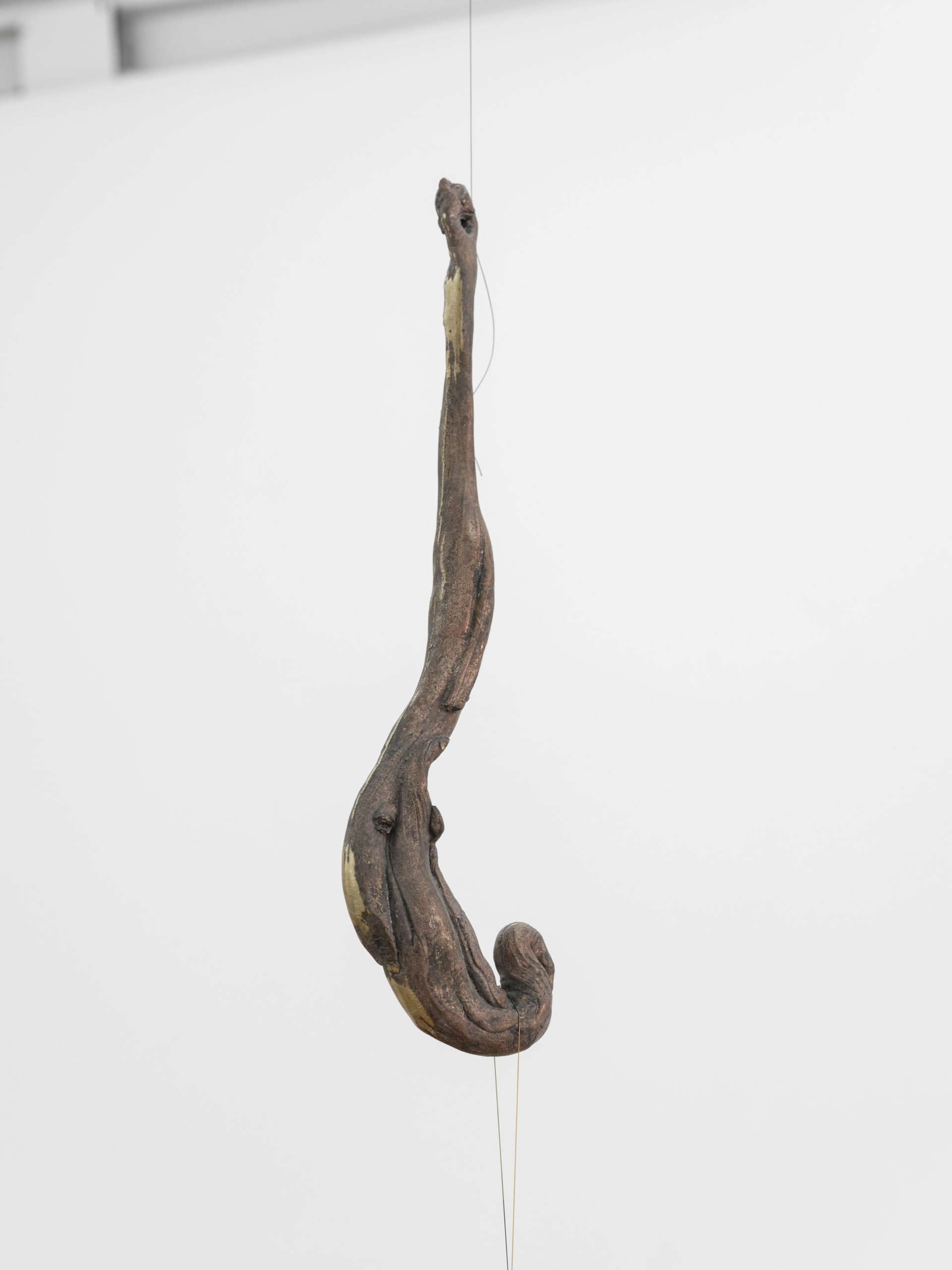
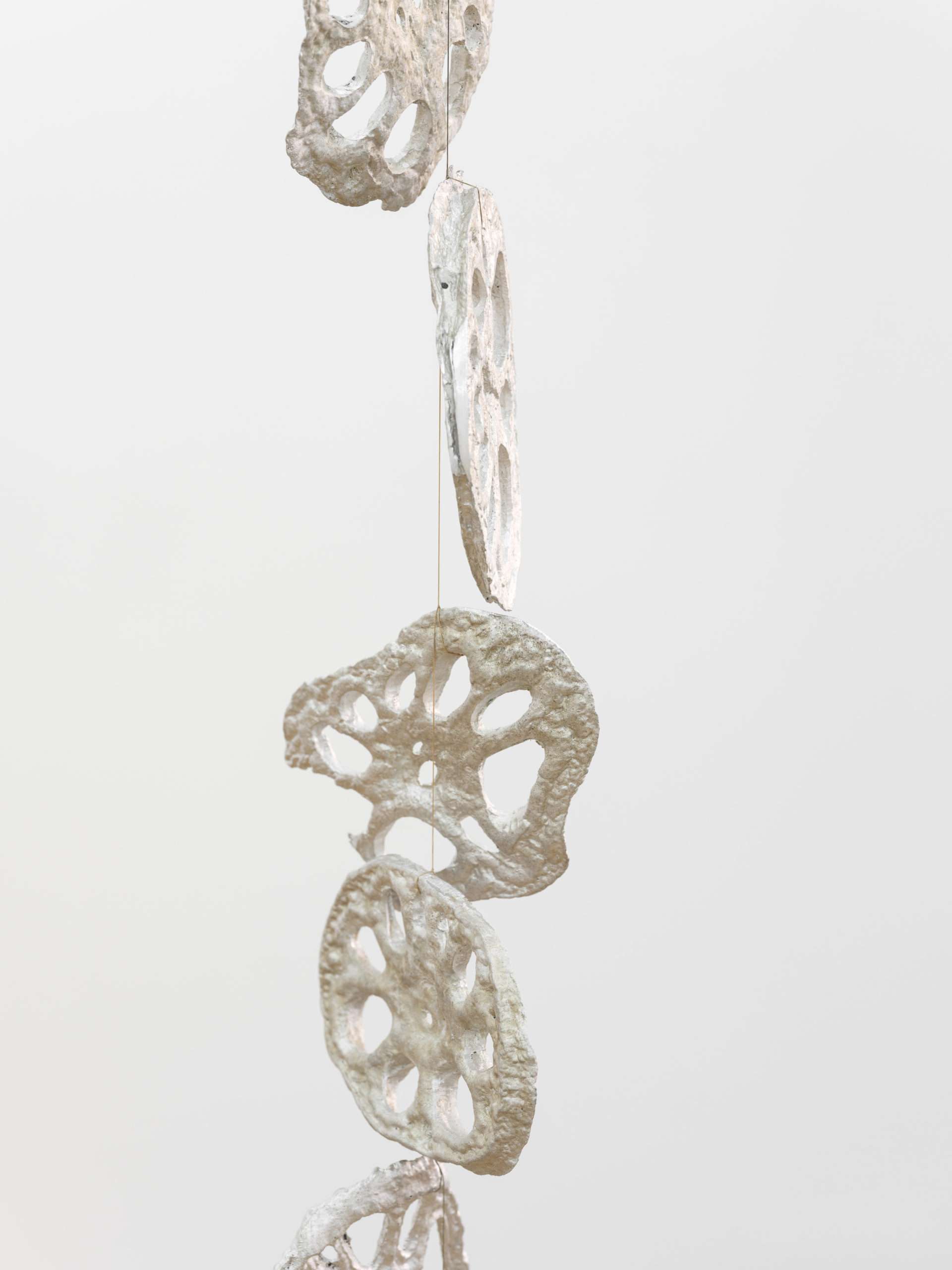
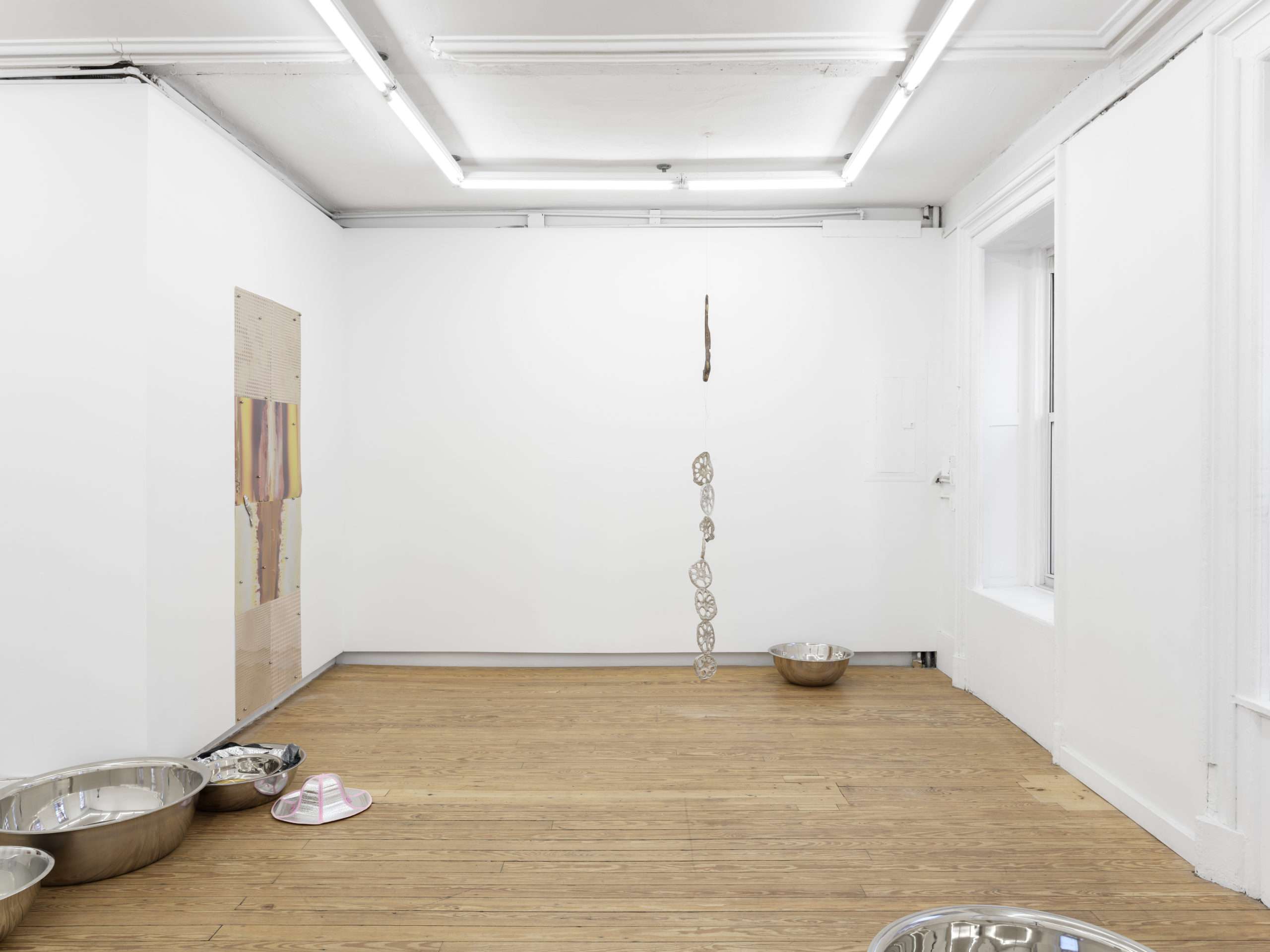
Interstitium (Door) I
Photograms, unfixed film (continually sensitive), spherical magnets, cast aluminum anchovy
32 × 80 inches
2021

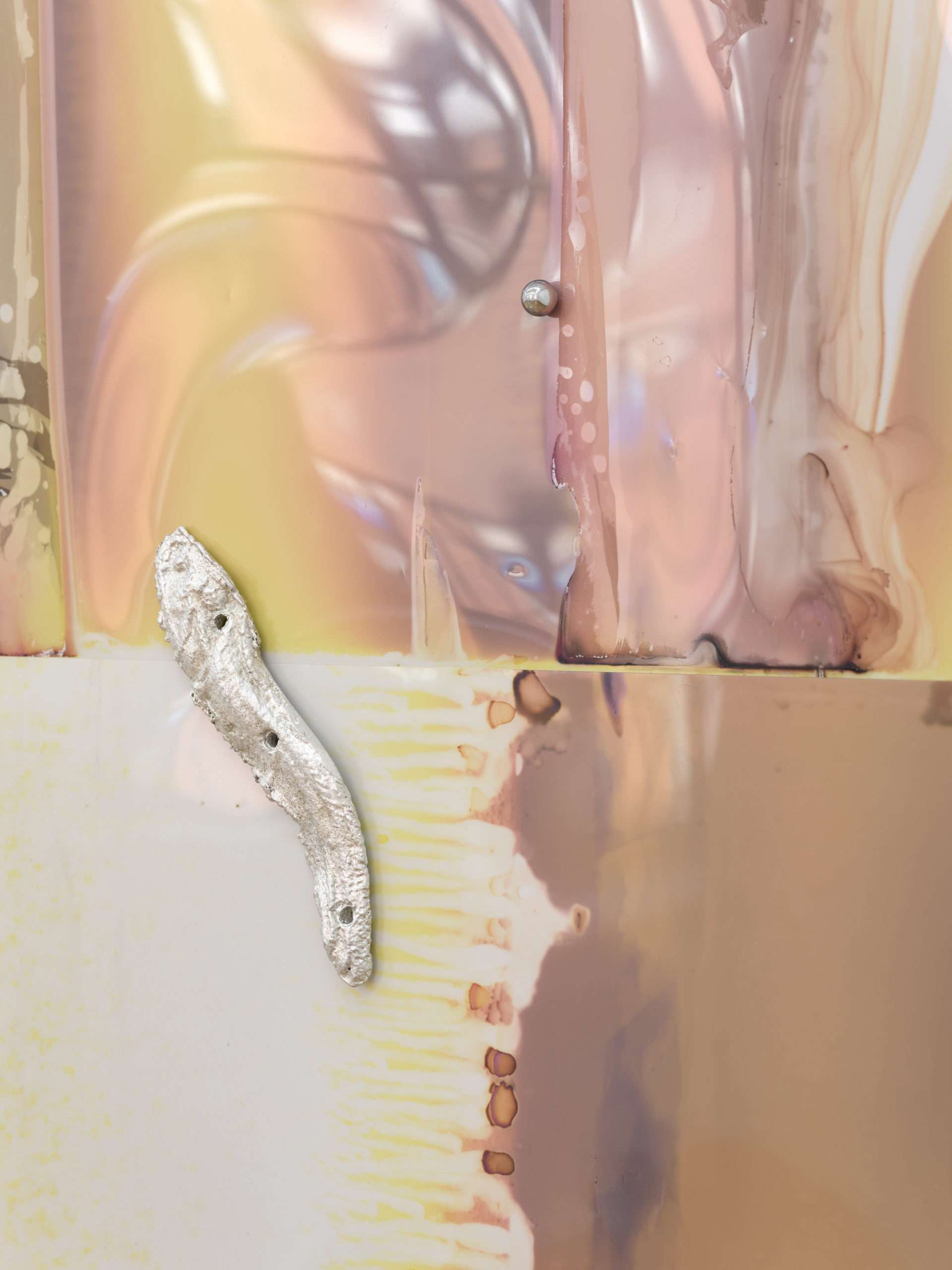
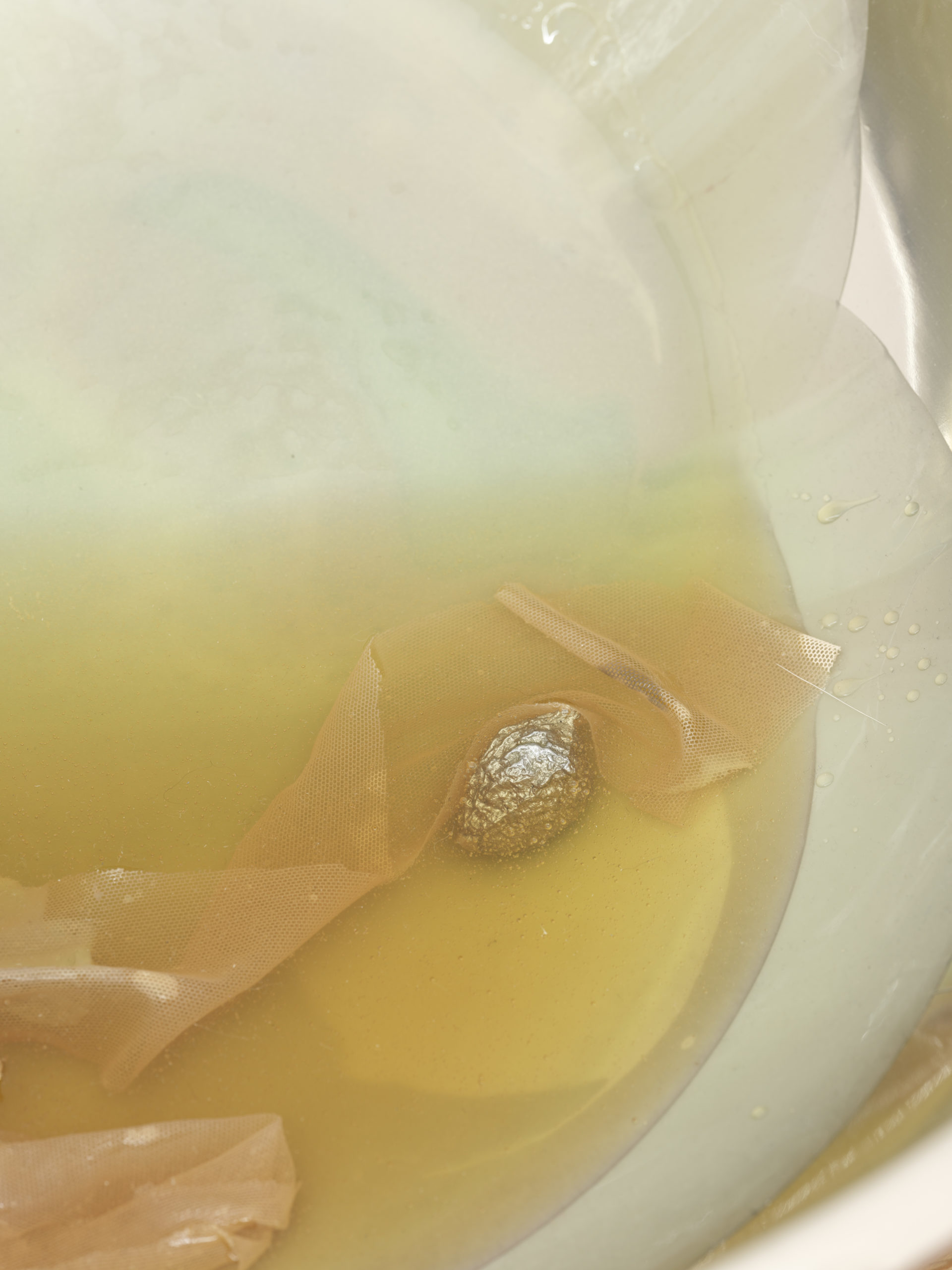
5 Nov–18 Dec 2021
Earth Surge
Laurie Kang
Franz Kaka and Helena Anrather are pleased to present Earth Surge, a solo exhibition by Laurie Kang. The exhibition is on view at 28 Elizabeth Street from November 5 through December 18.
The exhibition’s title, Earth Surge, takes its name from an acupuncture point on the bottom of the foot. Likewise, the sculpture Origin Gate (2021), on view in the gallery, shares its name with an acupuncture point on the lower abdomen. In it, enlarged, cast aluminum slices of dried lotus root together make a wind chime, roped through with trypophobic tunnels and openings. Lotus plants are mud creatures: they grow in still ponds, producing rhizomatic networks of nourishing tubers. In consumption, the roots constitute the body; like the body, they’re porous, attended by orifices and throughways.
A single enlarged cast aluminum lotus root also appears in Kang’s Great Shuttle (2021), which is currently on view as part of the New Museum’s 2021 Triennial: Soft Water Hard Stone. There, it’s positioned on the floor in front of a monumental structure: metal scaffolding bearing photographic paper and film both fixed (as photograms) and unfixed, of which the latter will continue to change over the course of the exhibition. Great Shuttle also takes its title from an acupuncture point, this one near the top of the spine, itself named after the tool that, in weaving, carries the weft thread across and between the warp.
Kang also uses the language of weaving to describe the photograms of Interstitium, (Door) (2021). Similar in composition to those affixed to one side of Great Shuttle, they feature geometric screens dotted with foggy circles. To make them, she layers photographic papers with woven paper tape and circular silicone cutouts, and leaves them to tan under sunlight. In the gallery, they’re patched into the shape of a door, gridded and ambiguously interrupted by apertures through which light, color, energy and information can travel. Their latticework is also an image of the body’s fascia, both binding and mediating flow. Like acupuncture, which Kang is studying to become a practitioner, a theory of circuitry is foundational to her installations.
Especially in the vicinity of Mother (2019), a community of stainless steel bowls of assorted sizes, these weavings speak to technologies of domestic space and experiments in reproductive labor. In keeping with this, Kang describes the New Museum installation as having been produced or gestated by Mother (2019), the work at the centre of Earth Surge. Each bowl is a container for material variations on sterility and contamination: wet beds of pigmented silicone; Asian pear, cabbage, and ginseng cast in aluminum; copper chainmail woven by her twin sister, the artist Hanna Hur; and nameless shapes of twisted polymer clay, among others. Set on the floor of the gallery, the bowls are staged as if for some speculative, low-slung ceremony.
— Tess Edmonson